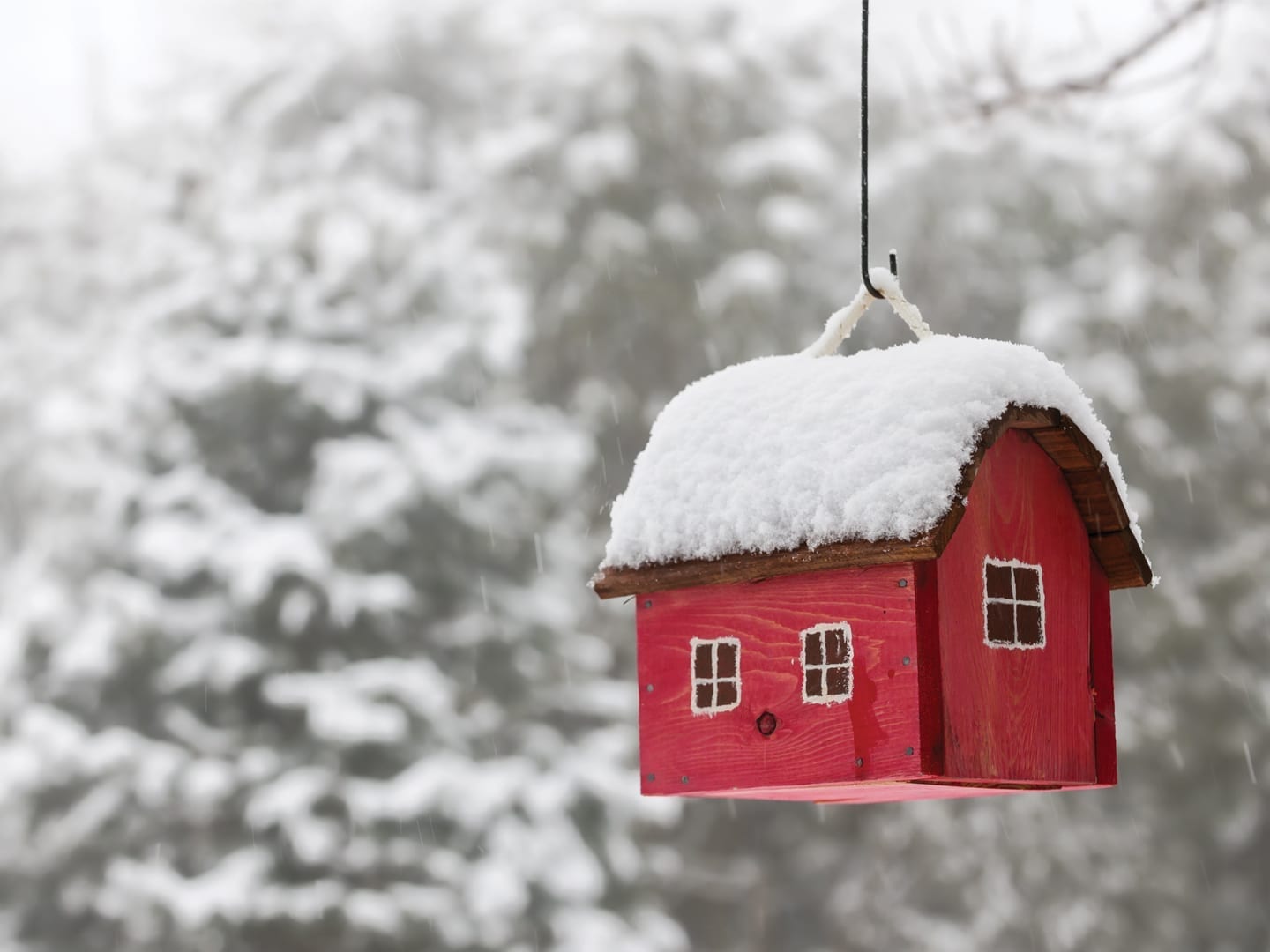Ice and Water Protector: What is it and Where Does it Go?
Table of Contents
- What is Ice and Water Protector?
- The Risks of Wind-Driven Rain
- The Risks of Ice Dams
- What is Ice and Water Protector Made Of?
- Where Should Ice and Water Protector be Applied?
- How Should Ice and Water Protector be Installed on a Roof?
- Can You Install Ice and Water Protectors in the Rain?
- Should You Put Ice and Water protector on the Entire Roof Deck?
- Should you Use Nails, Cap Nails or Staples on Ice and Water Protector?
- How to Calculate How Much Ice and Water Protector You Need
- Is Ice and Water Protector Always Necessary?
What is Ice and Water Protector?
Ice and water protector, sometimes also referred to as “peel and stick”, is a waterproof roof underlayment membrane developed to protect vulnerable areas on a roof from ice and water damage. Ice and water protectors (sometimes called ice and snow shields in cold climates) are made with polymer-modified bitumen.
The adhesive back surface of the membrane will bond to the roof deck, which is a superior underlayment for areas where ice dams or severe storms are common.
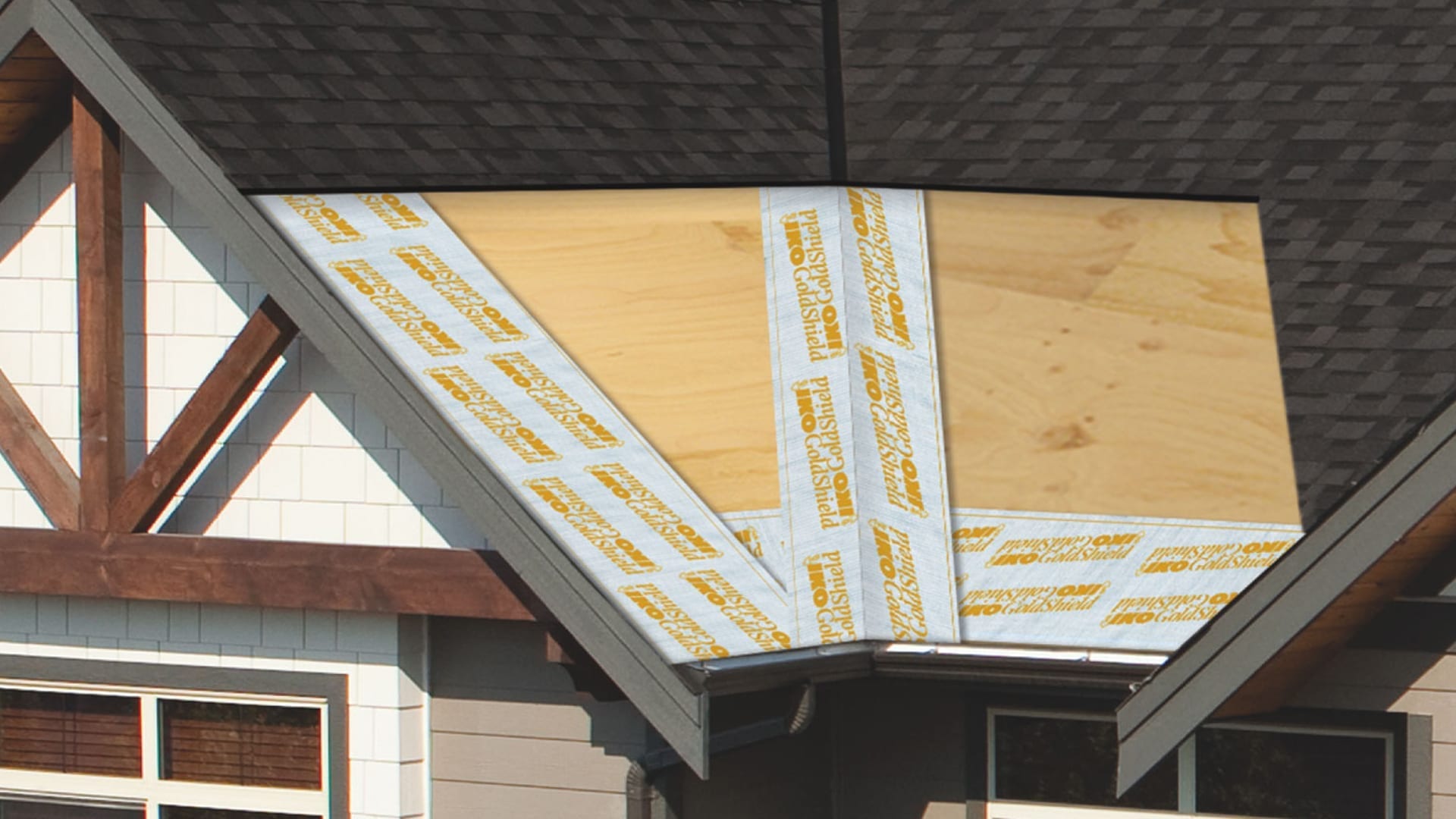
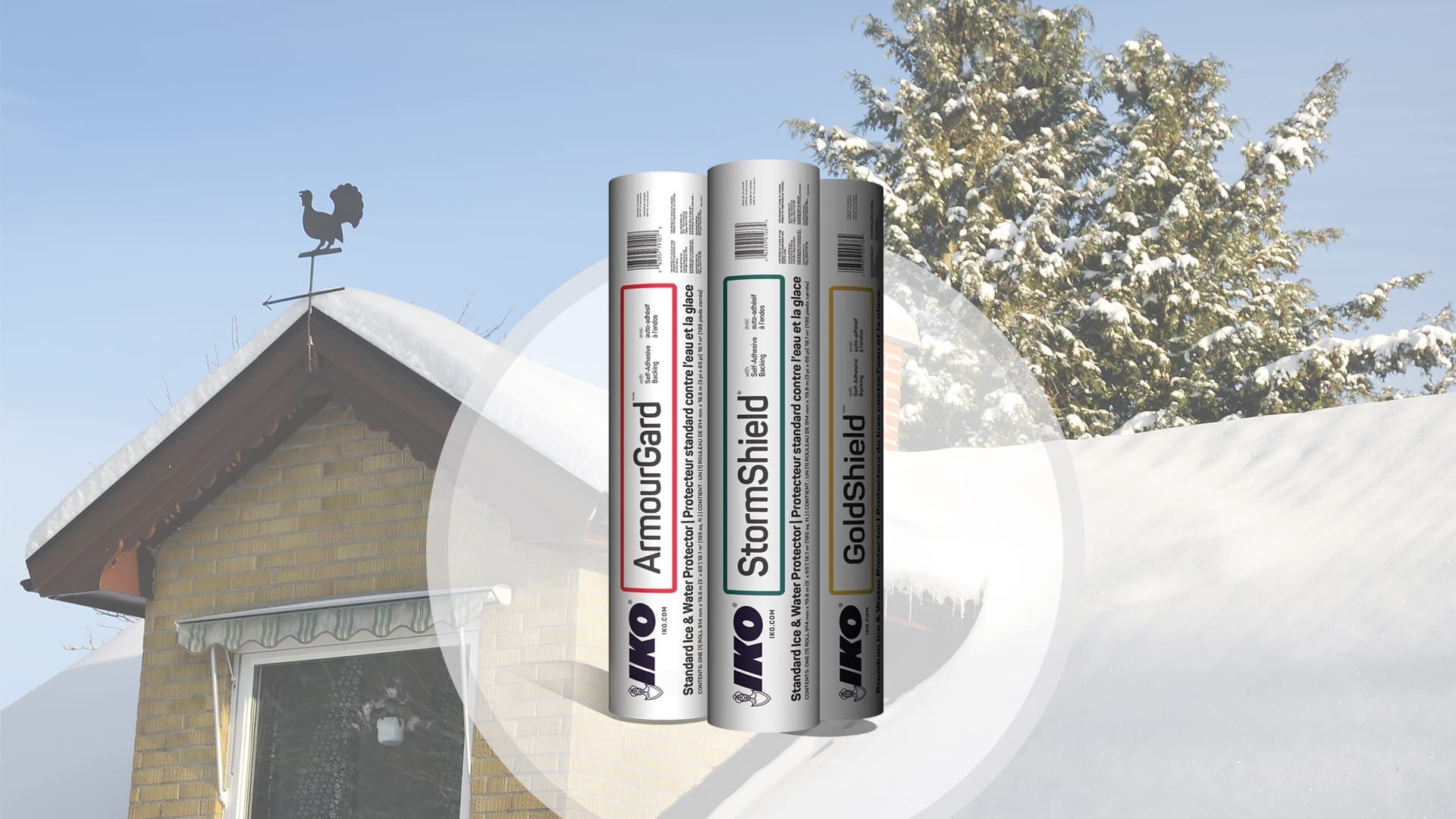
Ice and water protector products have a modified bitumen adhesive back surface that is covered by a release film. The film is removed during application so that the membrane will adhere to the roof deck and also form watertight end laps and side laps when properly applied. The membranes are designed to form a watertight seal around the nail penetrations when shingles are applied.
Potentially, covering an entire roof with ice and water protector can prevent leaks even after high wind conditions blow shingles off the roof—preventing further damage and making repair easier. However, because the modified bitumen back surface is continuous, these membranes can result in a vapor barrier. Should a homeowner decide to cover the entire roof with ice and water protector, it is even more important to consider proper attic ventilation carefully.
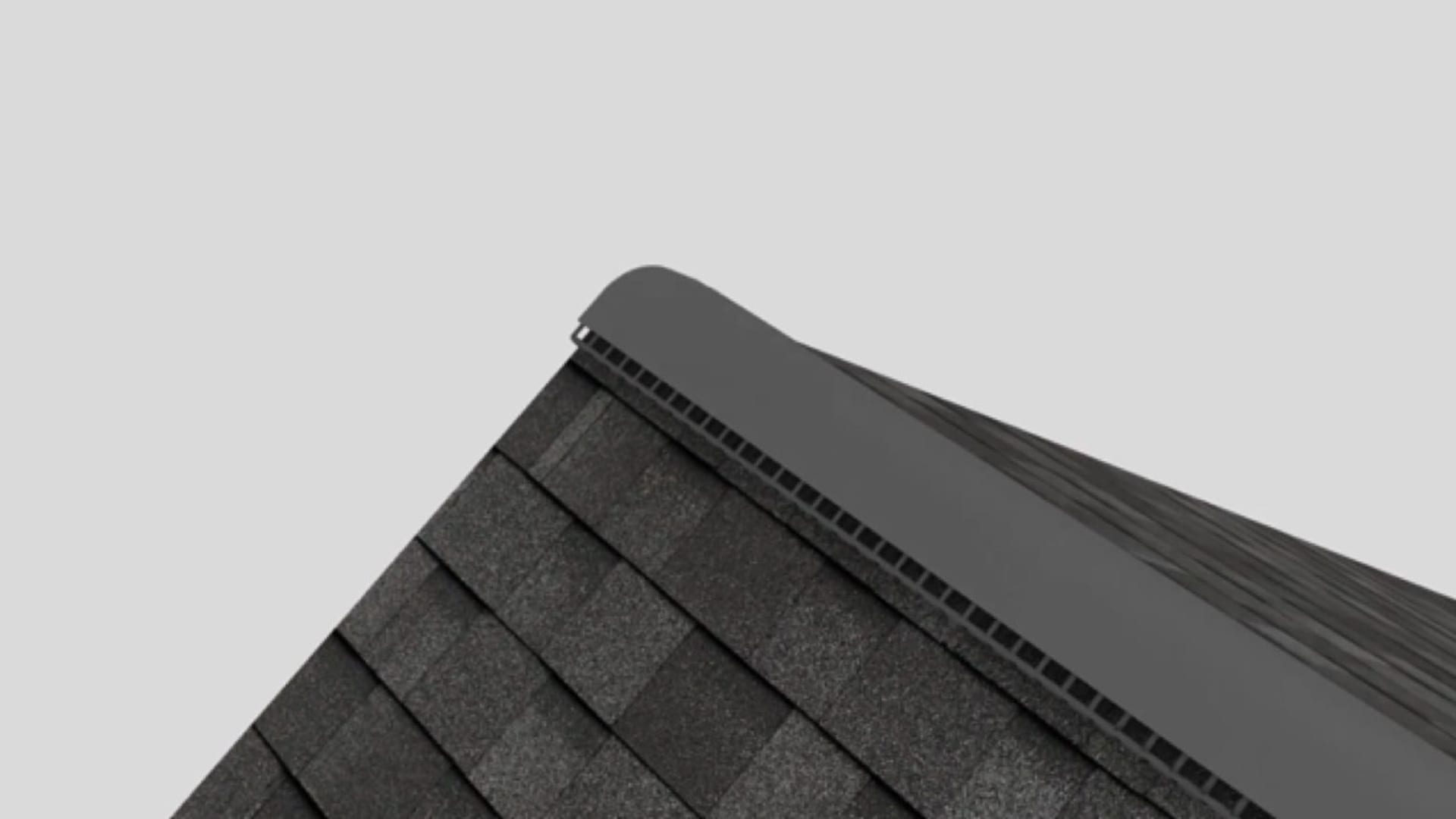
Two of IKO’s ice and water protector products, GoldShield™ and ArmourGard™ act as water retardants and achieve a superior moisture transmission rate of fewer than 0.5 perms. This measurement describes the material’s permeability, or how many grains of water can pass through the material in an hour at a certain level of water pressure. Canada’s National Roofing Contractors Association classifies any material with 0.5 perms or less as a vapor retarder. In fact, contractors can use ArmourGard as an exterior vapor barrier for foundations or basements.
The Risks of Wind-Driven Rain
In strong storm situations, such as hurricanes, the wind can push rainwater beneath the shingles. The ice and water protector membrane, fully adhered to the roof deck, greatly lessens the chance of the wind-driven rain infiltrating the roof surface and causing a leak.
The American National Flood Insurance Program does not cover wind-driven rain, according to FEMA. Standard private homeowners’ insurance policies also may not cover wind-driven rain. So, protection from this risk should be a paramount concern both when shopping for insurance and when protecting your roof.
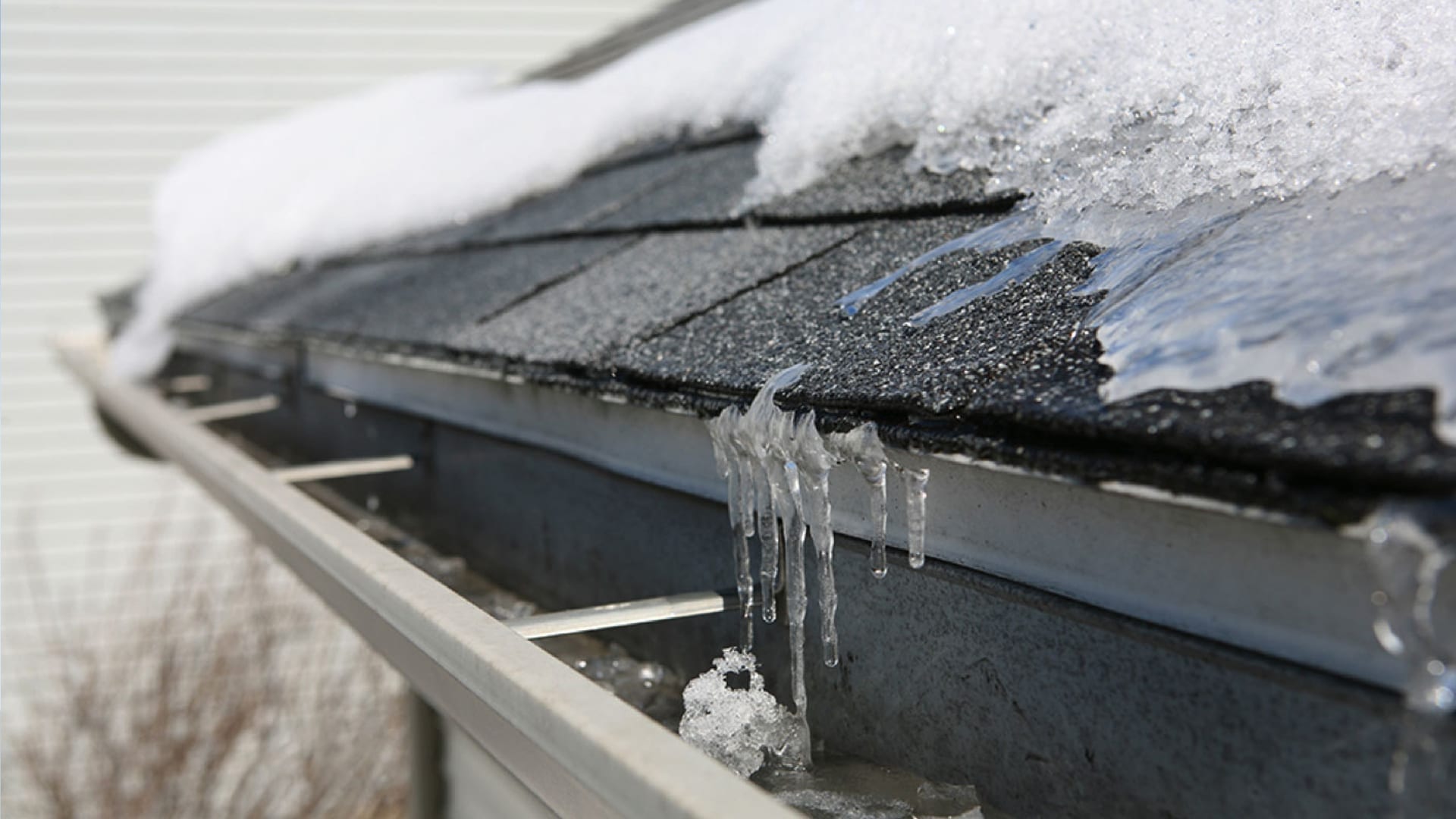
The Risks of Ice Dams
Ice dams are a serious issue for homeowners and roofing professionals in both cold climates and where occasional snow may fall. Ice dams are formed by the continuous melting and freezing of snow due to heat escaping from the house, or from a backup of frozen slush from the rain gutters. The melted water flows under the snow and freezes as it reaches the unheated soffit area at the eaves, thus creating an ice dam. When this occurs, water can be forced under the shingles and into the attic, resulting in damage to the home’s interior. Ice and water protector membranes are a time-tested and effective solution to help with this problem. They offer superior protection against the water that is forced beneath the shingles by an ice dam.
Ice and water protector is typically required for low-slope areas and valleys because these roof areas are particularly vulnerable. Homeowners are encouraged to check their local building code as some jurisdictions will have different requirements for use.
What is Ice and Water Protector Made Of?
The key component of roof ice and water protector is polymer-modified bitumen (also known as asphalt). A common feature of most ice and water protectors is the advantage of self-sealing around roofing nails. This feature greatly reduces the possibility of leaks occurring when ice or storms force water underneath the shingles.
GoldShield™, ArmourGard™ and StormShield® are all made with polymer-modified bitumen. IKO’s ArmourGard™ and StormShield® have a tough, nonwoven, glass fiber mat.
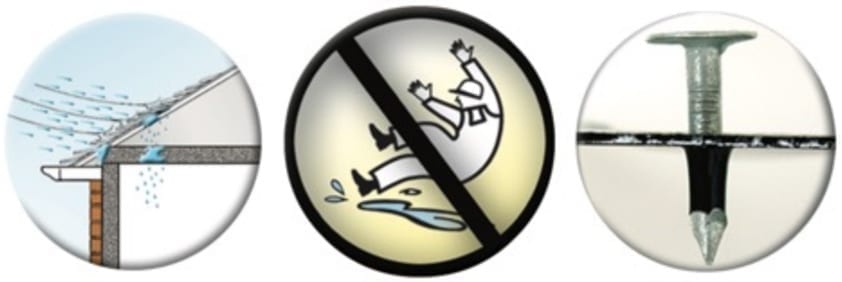
Where Should Ice and Water Protector be Applied?
- Most commonly, roofing professionals install ice and water protector on eaves, rake edges, overhangs and valleys, as they are most vulnerable to ice dams and wind-driven rain. As well, this may be a building code requirement in some jurisdictions.
- Vent stacks and chimneys should also have ice and water protector applied beneath their flashing, because often the shingles and or flashing in this area don’t overlap completely.
- Any feature that penetrates the roof deck, such as dormers and skylights, can benefit from the application of ice and water protection.
- Low-slope roofs, between the minimum of 2:12 and 4:12, are also high risk and should be protected with ice and water protector. Large snow drifts may collect on lower sloped roofs, because they often take the burden of snow from higher pitched roofs above. The lower slope also allows any ice dam that does develop to climb higher up the roof.
- In areas where the risk of either ice dams or wind-driven rain is severe, it is sometimes recommended, or mandatory, to install ice and water protector over the entire roof, regardless of pitch.
How Should Ice and Water Protector be Installed on a Roof?
- Ice and water protector needs to be installed directly onto the roof deck after you have placed the drip edge at the eave. (The drip edge will be installed over the ice and water protector and other underlayments at roof rake edges.)
- You should install ice and water protector before other underlayments, including roof felt. Around roof features like dormers and chimneys, you should place ice and water protector below flashing.
- If two courses of IKO’s ice and water protector are needed widthwise, you should apply the bottom course first. The second course should overlap the first course. The width of the side lap should be as recommended by the manufacturer.
- Installation instructions for ice and water protector products will vary by manufacturer, so always read the directions provided with the specific product you’re using.
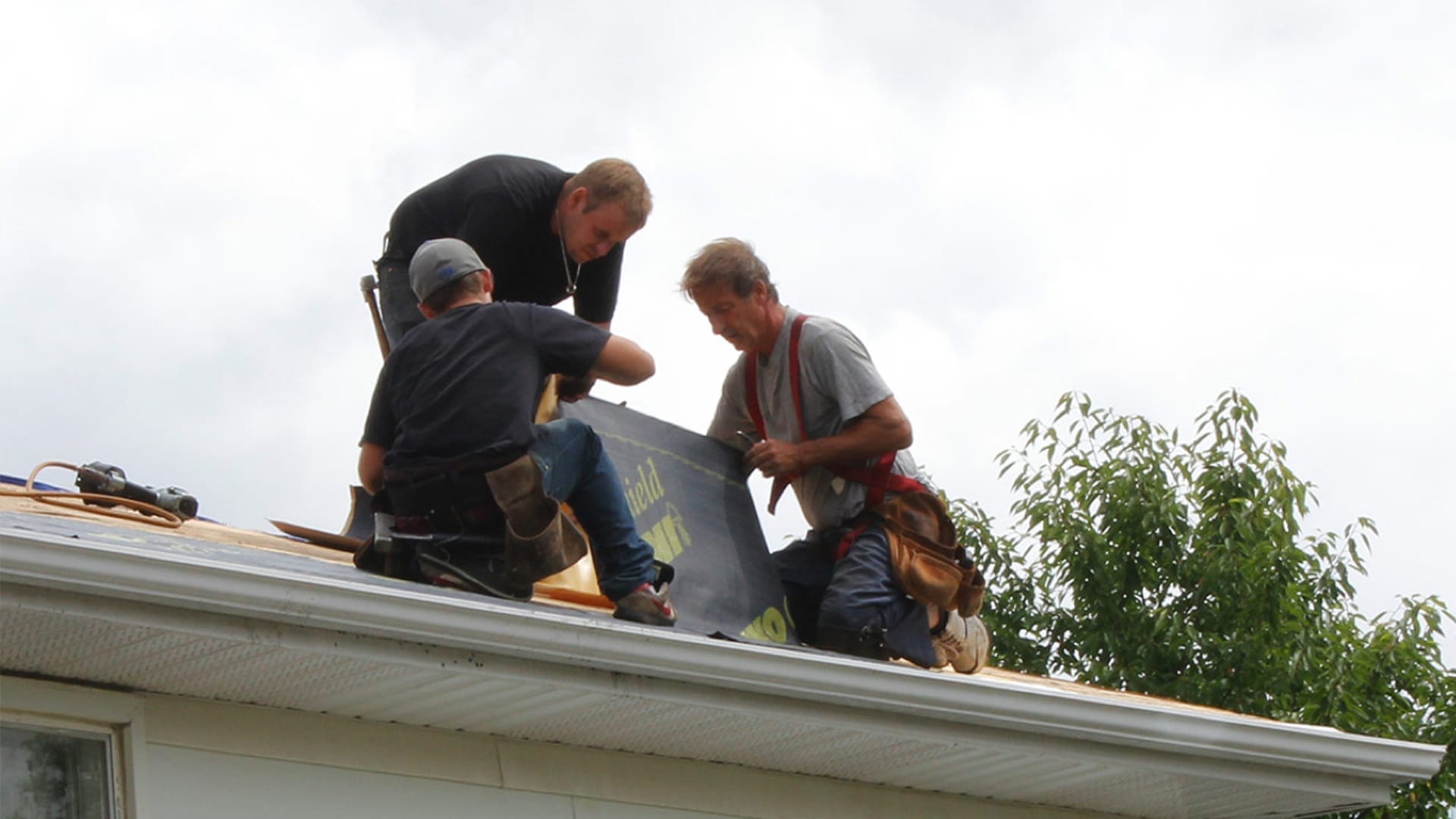
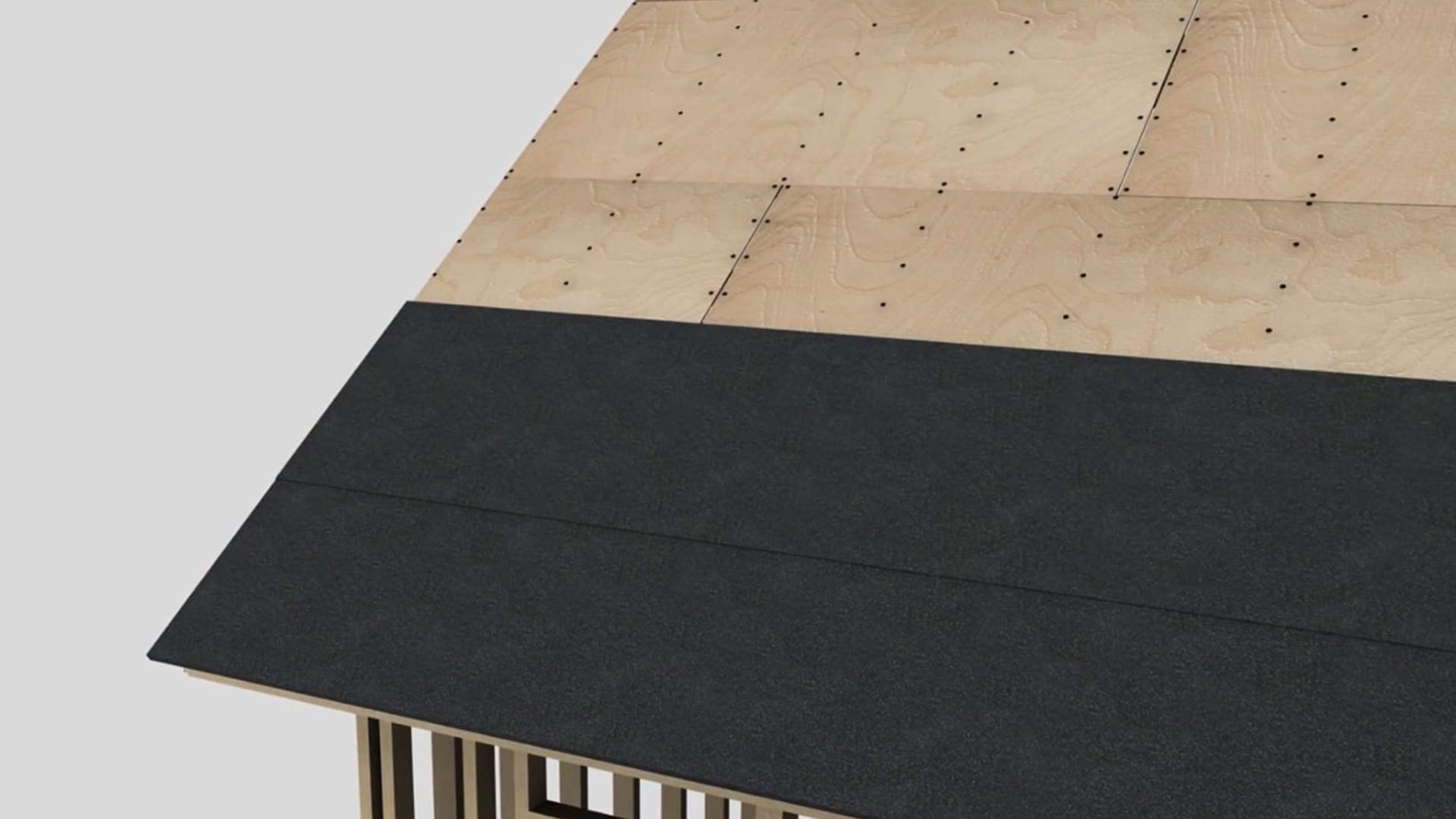
Can You Install Ice and Water Protectors in the Rain?
No, you cannot install ice and water protectors in the rain. The deck must be dry before you start applying the membrane. The moisture may interfere with the membrane’s ability to adhere to the roof’s decking.
Should You Put Ice and Water protector on the Entire Roof Deck?
There are some circumstances where you may put ice and water on the whole deck and some building codes may require it. However, in most circumstances, you should not put ice and water protectors on the entire roof deck. Other synthetic underlayment options such as IKO’s Stormtite® provide the protection that the rest of the roof deck needs. Other underlayments typically cost less than ice and water protector, so using them on the rest of the roof is more cost-effective for the homeowner. However, you should always refer to your local building codes.
Should you Use Nails, Cap Nails or Staples on Ice and Water Protector?
You do not need to use any permanent fasteners when installing ice and water Protector. Your specific product might call for the use of temporary fasteners to hold the membrane in place, but these are meant to be removed. Ice and water protector is a self-adhering membrane with an adhesive backing. It will stick to the roof deck on its own when properly applied. It will also self-seal around the cap nails that your roofers add for the synthetic underlayment and the roofing nails they add for your shingles.
How to Calculate How Much Ice and Water Protector You Need
In order to calculate your ice and water protector needs, you need to know what width of ice and water protector you need, and the length of the roof that you need to cover. First, there are a few factors that determine the width you will require.
Ice and water protector must reach above the highest expected level of ice dams, which will vary by region and the slope of your roof. The minimum is typically 2 feet (24 inches or 0.60 m) above the vertical projection of the inside of the exterior wall. In colder regions, a good practice is to cover the first 3 feet (36 inches or 0.91 m) of roof over heated space with ice and water protector. All overhangs should also be covered.
In many northern states and provinces, your local building codes will mandate a minimum width of ice and water protector around your eaves, valleys or other features. Sometimes, they may demand more than 3 feet of coverage. Most ice and water protector products are 3 feet wide. Therefore, if you need 4 feet of coverage, you need to use two full courses of ice and water protector to meet the requirements, even though this will end up covering almost 6 feet.
As for length, you’ll have to measure the roof in question. The length and coverage of a roll of ice and water protector will vary by manufacturer. GoldShield™ is 66.7 feet long (19.9 meters), and one package has an area of 200 square feet (19.58 meters squared). Stormshield® is 65 feet long (19.8 meters) and one package covers an area of 195 square feet (18.1 meters squared).
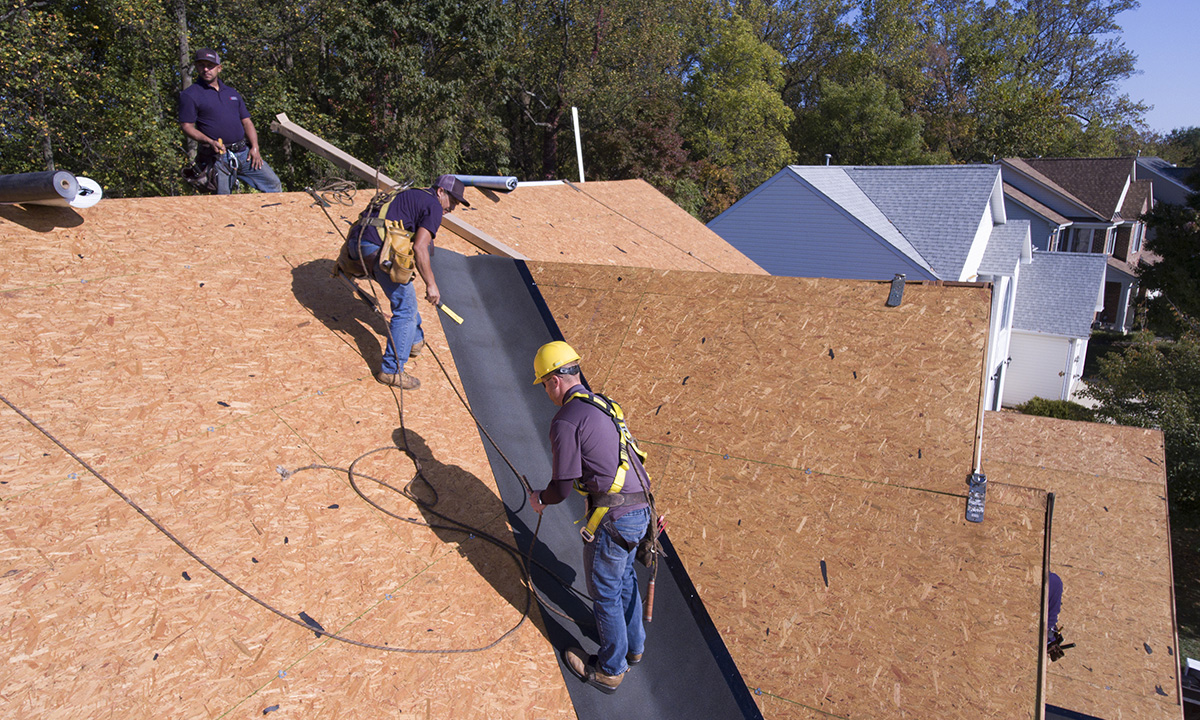
Is Ice and Water Protector Always Necessary?
If you are installing a new roof, ice and water protector is not always compulsory. In many northern areas of the United States and Canada, ice and water protector is necessary and mandated by building codes. In some southern states, building code authorities do not require ice and water protector. However, even where it is not mandated, ice and water protector offers many advantages to help protect your roof.
Ice and water protector membrane is a superior choice over roof felt for leak protection when properly installed and paired with the right products. Ice and water protector is part of a system working together to protect your roof, including the shingles and other underlayments.
To learn more about water and ice protectors, or to have it installed on your roof, please visit our Contractor Locator to find a local roofer in your area.
